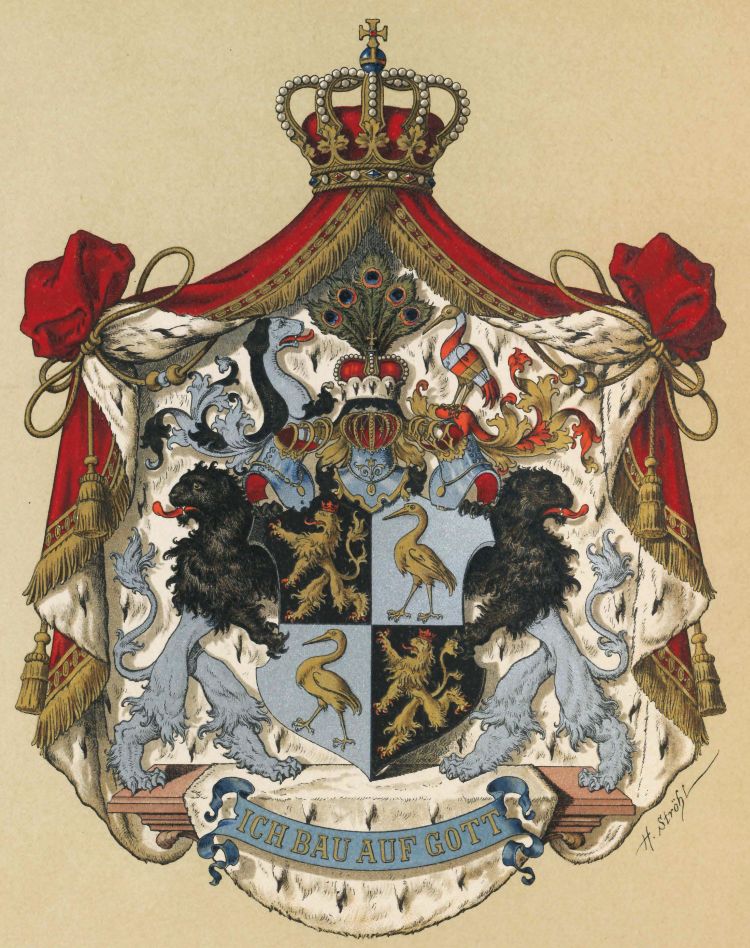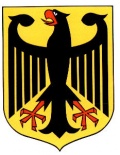Reuss
PRINCIPALITY OF REUSS-JÜNGERER LINIE
| German | blazon wanted |
| English | blazon wanted |
Origin/meaning
The arms show the old lion of Reuss, combined with the canting crane of the county Kranichfeld (crane=Kranich). The county Kranichfeld was inherited in 1455 by the Counts of Reuss, but it was not part of the free-state of Reuss. Still, it was claimed by the Dukes of Reuss and thus placed in their arms.
The history of the area is very complicated. The original County Reuss was divided in many smaller states and in 1807 there were still 5 states which joined the new Rheinish Union (a predecessor of the later German Empire), namely :Reuss-Gera, Reuss-Schleiz (principality), Reuss-Lobenstein (principality), Reuss-Ebersdorf (county) and Reuss-Greiz (principality).
The dynasty ruling Reuss-Gera became extinct in the early 19th century and the territory was ruled jointly by R-Schleiz, R-Lobenstein and R-Ebersdorf.
In 1815 both Reuss-Greiz and the four other states combined got a seat in the new German parliament. Reuss-Greiz became known as Reuss ältere Linie (Reuss older branch), the other four as Reuss jüngere Linie (younger branch).
Between 1824 and 1848 the four states in the Reuss-j.L. were further united to a single principality. In 1908 Heinrich XXVII of Reuss-j.L. became acting ruler in the other principality, as Heinrich XXIV of Reuss-ä.L. became insane. In 1913 Heinrich XXVII officially became ruler in both states, he abdicated in 1918.
The principality of Reuss-ä.L. used the same arms.
In 1919 the two principalities were combined to the new Free State of Reuss, which became part of Thüringen in 1920.
This page is part of the German heraldry portal Deutsche Wappensammlung |
Heraldry of the World |
|
German heraldry:
|
Selected collector's items from Germany:
|
Contact and Support
Partners:
Your logo here ?
Contact us
© since 1995, Heraldry of the World, Ralf Hartemink 
Index of the site
Literature :Ströhl, 1897 ;Köbler, Historisches Lexikon der deutschen Länder












